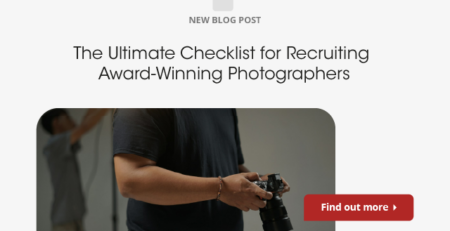A Guide to Crafting the Perfect Cover Letter
Writing a cover letter that properly illustrates your skills and personality is one of the most challenging parts of a job application. Unlike employment history and case studies, cover letters don’t have an objective point of view. Walking the line between informing a prospective employer of your skills and experience and bragging about how great you think you are can be tricky.
Many people find it awkward or overly self-aggrandizing to write about themselves in a cover letter and, as it turns out, that feeling may be correct. Employers know bragging when they see it and it’s one of the most unattractive qualities an applicant can have. Even if you try to cover it up with humblebragging or ersatz humility, self-promotion shines through.
Although too much humility is often a mind-killer that freezes up applicants and prevents them from communicating clearly, going too far in the opposite direction can be just as harmful. It’s a fine line to walk, but crafting the perfect cover letter requires a very particular balance between humility and egotism.
Besides the overall tone, cover letters should also take care to respond to all of the requirements in the job posting they address. Rather than simply listing your accomplishments and knowledge like your CV or resume does, a cover letter is a great opportunity to highlight what’s most relevant for the job you’re applying for. It’s a prospective employer’s first look at you and how your thought process works.
If you can include all of this, a cover letter quickly goes from self-aggrandizement to effective communication. Most of the time, employers aren’t going to move past the cover letter if it isn’t written effectively. It’s quite likely the perfect candidate will be passed up if they can’t write the perfect cover letter to match.
Design and coverletters go hand in hand. If you’re expected to make user-centered design at your new job, your cover letter should reflect that same design thinking. The user – a hiring manager or other employee, possibly one of your new bosses – has expectations and goals just like the user of any app or website. Even if your cover letters don’t land you a job, each one you submit should be viewed as user testing.
You most likely don’t have time to send out tons of coverletters to see what works and what doesn’t. That’s why we’ve prepared this guide to crafting the perfect cover letter. Once you understand your users and what their goals are, you’ll be able to build an attention-grabbing cover letter that will land you callbacks and, hopefully, gainful employment.
A (Brief) History of the Cover Letter
The resume was first invented by da Vinci ten years before Columbus set sail for the new world. Well over four hundred years after this surprising origin, cover letters began rising to their current prominence. Sometime in the mid-fifties, businesses began to ask applicants to send in additional information in the form of a cover letter. From its earliest iterations, the cover letter has been used to demonstrate things that can’t be discerned from the rest of the submitted application materials. Understanding that central purpose will help you write an effective cover letter.

Design and Coverletters
Design is a field where creativity is integral to success. Because of this, designers have to exhibit clear and explorative thinking at every stage, especially to senior talent that might have decision-making authority over the creative team but aren’t creative professionals themselves.
Even if you can’t predict the exact attitude and personality of the people who look over your coverletter, there are a few things you can depend on. Firstly, they probably have a ton of applications to sift through. Secondly, they already have some idea in mind of the type of person they believe would be best for the role.
It won’t do to try and suss out that ideal candidate and try to imitate it in your coverletter. Instead, you should be presenting yourself in such a light that your skills and experience naturally lend themselves to the role as specified in the job posting. This process should be familiar to every designer.
When you design a product, you have some idea about the ideal user but it’s the actual users you’re really concerned with. Imagine your prospective employer as a persona and write your job application to meet their needs. The more research you do into your employer and the position, the more realistic the persona will become and thus the more effective your cover letter will be.
The Best Cover Letters In 2020: What’s In Them?
Whether they were used by project managers, designers, or part-time IT workers, the best cover letters in 2020 had a few commonalities. Some are effective tools for cover letters from years past and some were unique to the general upheaval of 2020. Here are a few of the things the best cover letters in 2020 had that you should include in yours:
- Ditch “To Whom It May Concern”
It’s a classic tip for the perfect cover letter but it can’t be overstated: figure out who is going to be looking at this cover letter and write their name on the front page. If it isn’t clear from the job posting, they’ll at least know you have some research capability if you’ve addressed your cover letter to the right person.
Writing their name on your cover letter might not automatically get someone’s attention, but it will show them that you spent at least some time looking into and applying for the open position. If there isn’t a specific hiring manager who will look at your cover letter, you can address it to the company, the department, or some similar aspect of the hiring organization. It’s still much better than the rote “To Whom It May Concern” that’s been so overused.
- Highlight Communication Skills
Remote work exploded this year. That’s why all the best cover letters in 2020 managed to include some information about communicating and coworking via online platforms. You should also mention any familiarity you have with programs that allow large numbers of people to communicate in groups like Zoom or Slack.
Don’t go too overboard naming platforms since it can make it seem like you’re grasping for skills to add to your resume. However, mentioning that you have been able to weather the storm through 2020 is a great indication that you can adjust to new realities and think on your feet.
- Don’t Repeat Yourself
Not only should you avoid rehashing the same talking points throughout your coverletter, but you should also make sure you aren’t just providing the same information that’s on your resume. The coverletter is your opportunity to fill in the gaps that the resume format just can’t provide, so make sure to make the most of it.
The cover letter itself should be progressive, meaning you should be working toward a certain point and everything in the letter should reinforce that point. It will make the letter more organized and more interesting to read.
- Make It the Right Length
Your cover letter shouldn’t take up more than three or four paragraphs and those paragraphs should amount to less than a full page. The people reading your cover letter are in all likelihood going to be reading a large number of other ones as well and they aren’t going to have time to trudge through a miniature novella.
Cutting out the excess language will also help your cover letter be more direct and it can help you get straight to the point. If you can give the reader a general idea of yourself as a candidate before the page is over, they could well make a positive decision and forego reading through your cover letter to the end.
- Entertain and Keep Things Simple
All the best cover letters in 2020 used direct words and skipped verbose wording and adjectives. Even if they appear to be uniquely illustrative of a certain point you’re trying to make, rarely-used words and long sentences are only going to beleaguer the point and will most likely irritate the reader, potentially causing them to discard your cover letter and the rest of your application.
No cover letter is going to read like a bestseller, but you should attempt to make yours as entertaining as possible. Resist the urge to make jokes or write in an informal tone, but keep the reader interested by building some kind of narrative into your cover letter. The best way to do that is to write with enthusiasm about your skills and experience. After all, if you’re not enthusiastic about your work why would a company be enthusiastic about hiring you?
How to Write a Perfect Cover Letter
One thing design and coverletters have in common is that they’re both iterative. Of course, you only have one chance to send your cover letter for a given position, but when you’re writing it you can take the time to review it and make changes. Here are a few more tips to write the perfect cover letter:
1- Peer Review
Since coverletters are so universal in job applications, it’s quite likely that all your friends and coworkers have some old ones lying around. Even if they’re not actively job searching, they might have old letters in the sent folder of their email account. Offer to read their cover letters in exchange. Sharing cover letters makes the whole process more fun and less stressful. Plus, it can double as an exercise in constructive criticism.
2- Avoid Being Too Quirky
There are tons of stories of people who got hired just because they had a super original cover letter, but in general, you should aim to limit going completely off-book when you write one. Having a cover letter that stands out is invaluable but if you take it too far the format of the letter can impede its ability to achieve important goals like communicating your value as a creative worker. In the end, it’s more important to make your cover letter stand out because you shine through rather than using a gimmicky format.
3- Write a Narrative
Design and coverletters have narrative in common. It’s one of the things that pique peoples’ interest more than just about anything else. Constructing a narrative can also demonstrate your professional growth and help organize information in a way that is appealing and illustrative for the reader. Make sure the narrative is genuine and natural. There’s a risk that it can come across as self-serving if you tell a story that’s just about how great you are rather than telling a story of how you grew.
4- Show You’re Versatile
There’s a fine line between demonstrating your qualities and showing how well you can adapt to different situations. Avoid diluting your skillset by talking about possibilities rather than concrete things. One of the most important ways to show you’re dynamism is in fitting in with company culture. It’s impossible to show such a thing on your resume and the cover letter is the perfect opportunity for it. Don’t only show how you can fit into the existing company culture but also demonstrate the value you can add to it.
5- Close With Your Expectations
The cover letter should end with a view toward the future, especially one in which you’ve been hired on with the company. Make sure to leave this for a closing statement and leave it out of the rest of the cover letter. You can also take this time to mention what you expect from the position, but make sure it matches with the research you’ve done. Don’t drop any big statements in at the end because it’s not guaranteed you’ll be invited for an interview where you can clarify anything.
6- Insert a Call to Action
Another way design and coverletters work similarly is that they both center around turning interest into actionable results. In the case of a cover letter, the action is generally a job interview. The narrative of your cover letter will be much more effective if it builds up well to the action and doesn’t overstate it. Invite the reader to reach out for more information without making an interview seem like a foregone conclusion.
7- Show, Don’t Tell
This classic piece of writing advice is just as important in a cover letter as it is in any piece of creative writing. Imagine standard phrases from cover letters and professional emails such as “I am writing to express interest” and things of that ilk. Rather than saying that you’re writing to express interest, why not just express interest? If you can demonstrate that you’re interested, you’ll save wasted space in your cover letter and it will make your writing more interesting to the reader in general.
8- Be Confident
Avoiding outright egotism is important for an effective cover letter, but don’t go so far as to appear meek or shy. Even if you’re quiet by nature, you can build a strong representation in your cover letter just by showing that you know your stuff and are confident in your ability to do your job. It’s not necessary to be arrogant or claim that you’re the best person in the world at your job, but use real-world examples of your capabilities to shine through in your cover letter.
9- Use Bullet Points
For certain experiences and key characteristics, you can use bullet points. People who are scanning through cover letters will be able to go straight to the bullet points, and if they have some interesting facts in them it’s more likely they’ll take you up on your call to action. Don’t overuse them. Restrict bullet points to lists of three or four quick items that you really want to highlight. If you don’t have three or four points, skip the bullet points entirely. The worst thing you can do is draw attention to lackluster information.
10- Talk About Your Passion
Most creatives get into the business because they’re passionate about creative work. Even if they’d rather be artists than working in a corporate art department, many still have a passion for design work or whatever aspect of the creative field they’re in. Explain how you got through a tough time in your career thanks to your passion for what you do. Remember to show you were passionate and not just explain it.

Conclusion:
The cover letter is viewed by some as an ineffective part of the job application process but it doesn’t seem to be going anywhere. If you want to get to the interview stage, writing a cover letter that showcases your talents and passion is the first step. They can help fill in gaps that aren’t apparent in your resume and the rest of your application materials. Use the steps in this guide to make a unique and effective cover letter that will help you land job interviews.












